By Christopher Miskimon
The Cold War was fought on every continent and hemisphere in thousands of battles, large and small. Americans are mostly familiar with those the nation was directly involved in, such as Korea and Vietnam. Other conflicts are largely forgotten in the West today, especially those of long-suffering Africa. It was there some of the largest battles were fought; one in particular pitted two indigenous forces, each backed by a superpower, against each other in Africa’s largest battle since World War II.
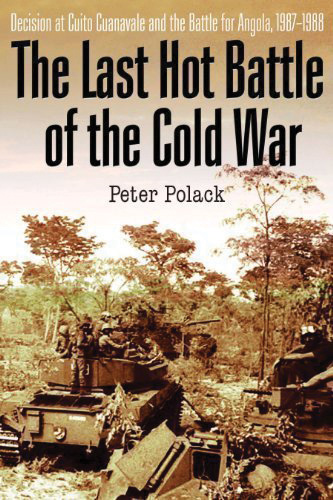
The Angolan Civil War lasted from 1975 to 2002. On one side, the Armed Forces for the Liberation of Angola (FAPLA) was backed by the Soviet Union and its client state, Cuba. Opposing them was the National Union for the Total Independence of Angola (UNITA), supported by South Africa. In turn, the South Africans were assisted by the United States, Israel, and several other Western nations to varying degrees, sometimes clandestinely, other times not. Weapons, equipment, and advisers flowed into Angola from both sides, and eventually combat troops deployed into the war-torn nation.
During 1987 a FAPLA offensive threatened UNITA’s strongholds in southeastern Angola, and the South African Defense Force (SADF) intervened to prevent this. The stage was set for a showdown that became one of the last large engagements before the Berlin Wall fell. The Last Hot Battle of the Cold War: South Africa vs. Cuba in the Angolan Civil War (Peter Polack, Casemate Publishers, Havertown, PA, 2013, 232 pp., photographs, appendices, notes, index, $32.95, hardcover) is the story of that battle. It centered on a town called Cuito Cuanavale, the name a holdover from the former Portuguese rulers of Angola.
Each side brought strengths and weaknesses to the fray. FAPLA was equipped with hundreds of Soviet T-54/55 tanks, vehicles, artillery, and MiG jets. FAPLA had Soviet advisers to guide it, although in time the Soviets, unused to fighting a guerrilla war in the jungle and doctrinally closed-minded, proved of limited use. The Cubans, initially used as advisers and in support functions, had a different mind-set and eventually came to lead the fight. UNITA and the SADF had advantages in training that offset FAPLA’s size and vast equipment stocks. SADF in particular was the best-trained force, with an understanding of combined arms warfare and a professional core. It suffered from a frequent rotation of leaders, an aversion to casualties, and was always understrength.
The Battle of Cuito Cuanavale also saw innovations often considered the children of later wars. SADF formed its troops into small combined arms battlegroups supported by artillery, air defense, and antitank assets. Overhead flew small reconnaissance drones providing real-time video surveillance to commanders in the field. Armored cars carrying electronic warfare equipment gathered radio intercepts. To protect its own communications, SADF used frequency-hopping radios, and also new Global Positioning System (GPS) technology to offset FAPLA’s access to satellite imagery. Due to the arms embargo, the South Africans developed their own air-burst artillery shells, mine-resistant vehicles, and fire-control computers for the howitzers. These developments occurred at a time when the U.S. Army was just introducing many of the same types of equipment.
The FAPLA attack was quickly blunted by the SADF-supported UNITA troops, and before long the offensive became a defensive fight. The Soviet advisers were unprepared and soon fled the field as the South Africans pushed their Angolan enemies back in disarray. As the FAPLA forces fell back to Cuito Cuanavale, the situation began to change. Cuban troops entered the fray in large numbers and set up a firm defensive line, using minefields to channel the attacking UNITA/SADF columns into kill zones. The South Africans could still make progress, but only slowly. By April 1988, the fighting ground to a halt as events elsewhere drew attention away until a peace agreement was reached leading to the withdrawal of South African troops.
The novelty of this book is in its coverage of an unknown battle in a little-known war. The author tries to cover the subject in a neutral fashion and mostly succeeds. The book shows a slight lack of military expertise in the writing, but this is balanced by his open approach to the combatants, thorough research, and explicit detail. Students of Africa’s wars and the merely curious should enjoy the book. It is mainly a story of the odd match between Cuba and South Africa, separated by an ocean but brought together on the battlefield of another country trapped in its own struggle.
 Defender of Canada: Sir George Prevost and the War of 1812 (John R. Grodzinski, University of Oklahoma Press, Norman, 2013, 375 pp., maps, illustrations, appendices, notes, bibliography, index, $34.95, hardcover)
Defender of Canada: Sir George Prevost and the War of 1812 (John R. Grodzinski, University of Oklahoma Press, Norman, 2013, 375 pp., maps, illustrations, appendices, notes, bibliography, index, $34.95, hardcover)
When the War of 1812 began, George Prevost, governor of Canada, found himself in an unenviable position. He was charged with the defense of a vast, underpopulated area, mostly undeveloped, with scant forces to do the job. Regular troops were few and had to be supplemented by a militia not always reliable. Most of the naval assets needed for the job had to be constructed and manned. American forces, also mostly militia, were more numerous and threatened Canada from several directions.
Prevost was up to the task, though. He understood how to use the system of rivers and lakes throughout the Canadian-American border. The Northwest Frontier area in particular was populated by native tribes who could be stirred against the encroaching Americans. The governor also proved adept at servicing the logistical needs of his widely spread forces. As a result, British forces were able to defeat most American plans, thus keeping Canada intact.
Despite these accomplishments, Prevost was charged with failing to act decisively and losing a battle at Plattsburgh in 1814. Recalled to London, he requested a court martial to clear his name but died before it was held. Subsequent criticism of him was negative but failed to take into account how he and his officers preserved Canada, keeping it British for the postwar world. This new work by a Canadian scholar maintains Prevost deserved a better end than the one he suffered.
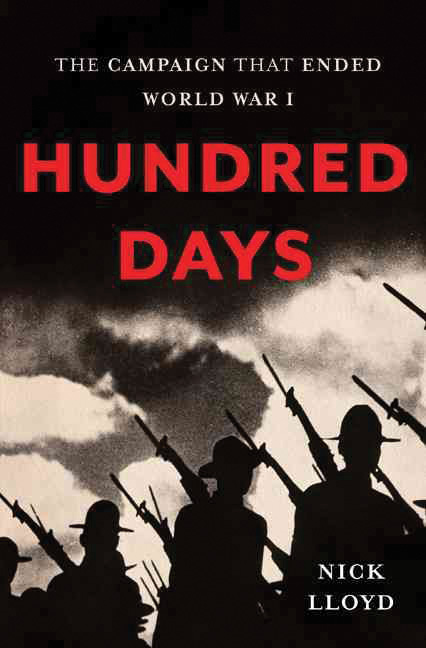 Hundred Days: The Campaign That Ended World War I (Nick Lloyd, Basic Books, New York, 2014, 400 pp., maps, illustrations, notes, bibliography, index, $29.99, hardcover)
Hundred Days: The Campaign That Ended World War I (Nick Lloyd, Basic Books, New York, 2014, 400 pp., maps, illustrations, notes, bibliography, index, $29.99, hardcover)
“I never saw so many men, guns, ambulances, and various kinds of equipment. We knew something was coming off,” wrote American Corporal Frank Faulkner on the night of July 17-18, 1918. Though he could not know it, what he was watching was the beginning of the end of the Great War. He was one of hundreds of thousands of soldiers from a number of nations ready to carry out a herculean effort to finally smash the German defenses after four years of horrible conflict.
Just days after the young American saw his side’s vast military machine moving, the Hundred Days’ Offensive began. The Germans were exhausted after their own attacks failed and it was time for the Allies to move. It began with the Battle of Amiens where the Western powers achieved surprise and started the Germans on their retreat from France. New weapons such as the tank and light machine gun played their part, but it was the soldiers who truly carried the war to its conclusion. Using accounts of men from the front lines all the way to the war rooms of the general staffs, this work pulls together the end of the war in a concise, readable fashion.
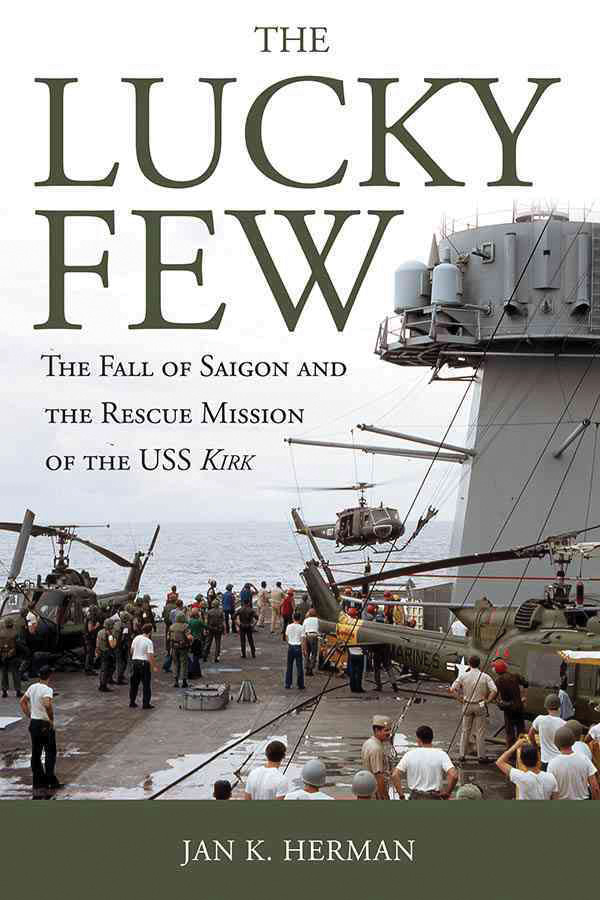 The Lucky Few: The Fall of Saigon and the Rescue Mission of the USS Kirk (Jan K. Herman, Naval Institute Press, Annapolis, MD, 2013, 192 pp., photographs, notes bibliography, index, $39.95, hardcover)
The Lucky Few: The Fall of Saigon and the Rescue Mission of the USS Kirk (Jan K. Herman, Naval Institute Press, Annapolis, MD, 2013, 192 pp., photographs, notes bibliography, index, $39.95, hardcover)
The end of the Vietnam War was sad and ugly. In April 1975, as North Vietnamese tanks were entering Saigon, the city collapsed into chaos. A U.S. Navy task force cruised offshore, plying the waters while a handful of American diplomats and Marines awaited evacuation to the safety of those ships. The destroyer escort USS Kirk was among those ships. As the evacuation continued, not only Americans but South Vietnamese fleeing their defeated nation began to appear. Some were from the South Vietnamese Navy, its own ships burdened with refugees. Others began to appear in helicopters, more than the task force could accommodate. For the USS Kirk and her crew, this meant unloading UH-1 Huey helicopters, which landed on her helicopter pad, then unceremoniously dumping them overboard to make room for another.
In the end, approximately 32,000 people were rescued by the task force in what became a massive humanitarian effort. The crew of the USS Kirk gave aid and fed these exiles; some even changed diapers and dried frightened children’s tears. The pilot of a CH-47 Chinook helicopter, too large to land on the flight deck hovered above so the occupants could jump down to safety, then he ditched his helicopter in the ocean. Desperation and heroism combined for a few harrowing days in the South China Sea.
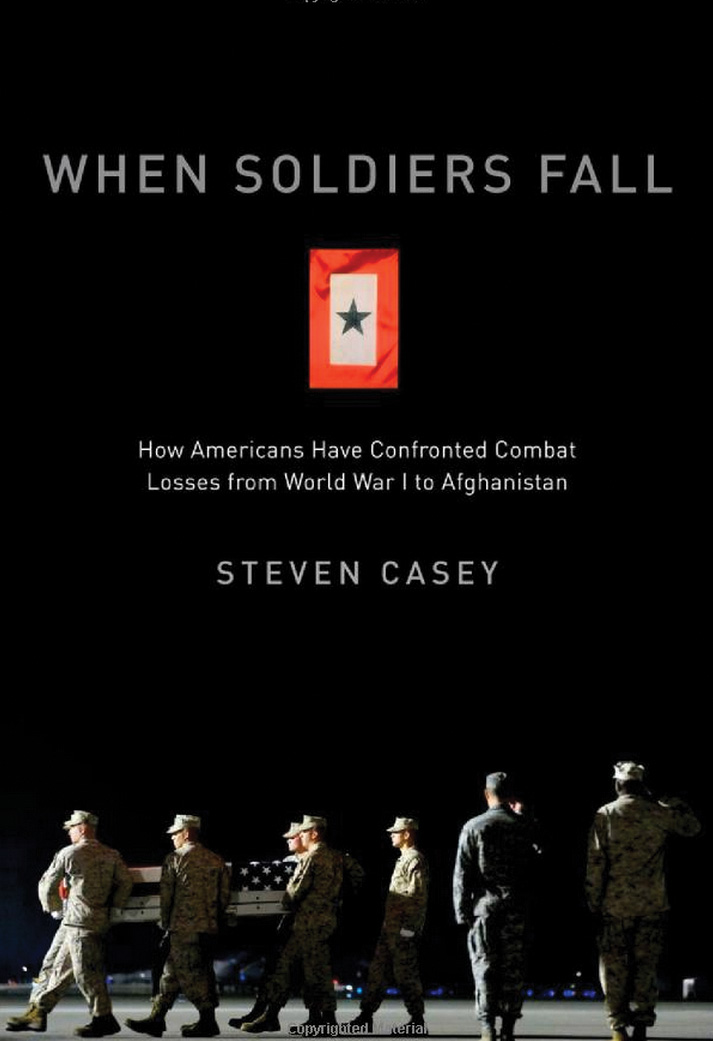 When Soldiers Fall: How Americans Have Confronted Combat Losses from World War I to Afghanistan (Steven Casey, Oxford University Press, New York, 2014, 310 pp., charts, photographs, notes, bibliography, index, $29.95, hardcover)
When Soldiers Fall: How Americans Have Confronted Combat Losses from World War I to Afghanistan (Steven Casey, Oxford University Press, New York, 2014, 310 pp., charts, photographs, notes, bibliography, index, $29.95, hardcover)
The United States has a reputation of being averse to taking casualties in its wars. Deserved or not, the belief exists at home and abroad that losses in battle weaken the resolve of the American public. While time has actually shown this view to be often false, it persists nonetheless. Political and military leaders have had to work around this issue for decades for numerous reasons: partisan politics, poor accounting of the lost, and the stated aim to protect the families of the dead have all played into the issue.
At different times, casualty figures have been censored, downplayed, or even exaggerated, depending on the situation at hand. For the military, wariness over losses has led to investment in technology and overwhelming firepower to reduce the number of killed and wounded. As communications technology has advanced, the cycle of reporting has become faster, requiring quick responses to losses during America’s recent conflicts in Iraq and Afghanistan. Even the improving ability to identify bodies on the battlefield has left its mark.
Years of research went into this book and the effort shows clearly. The author combines the disparate arenas of politics, military affairs, the news media, and even race relations into a coherent narrative to shed light upon his subject matter.
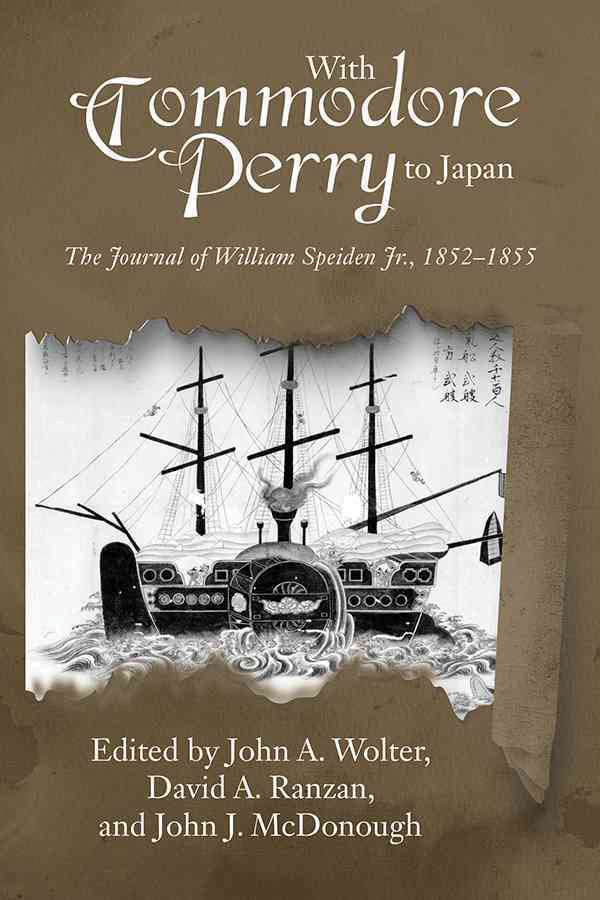 With Commodore Perry to Japan: The Journal of William Speiden, Jr., 1852-1855 (Eds. John A. Wolter, David A. Ranzan, and John J. McDonough, Naval Institute Press, Annapolis, MD, 2013, 320 pp., maps, illustrations, notes, bibliography, $39.95, softcover)
With Commodore Perry to Japan: The Journal of William Speiden, Jr., 1852-1855 (Eds. John A. Wolter, David A. Ranzan, and John J. McDonough, Naval Institute Press, Annapolis, MD, 2013, 320 pp., maps, illustrations, notes, bibliography, $39.95, softcover)
The American expedition to Japan was a major undertaking for the young nation with far-reaching effects for subsequent world events. Matthew Perry’s voyage opened a previously closed, insular Japan to relations with the Western nations. Sailing with the famous Perry was 16-year-old William Speiden Jr., purser’s clerk aboard the steam frigate USS Mississippi. His father of the same name was the ship’s purser. Young Speiden kept a 300-page journal of his experiences aboard ship and in Japan. This journal is reproduced along with background information and a number of Speiden’s sketches. Many other illustrations were drawn by other members of the crew or Chinese artists during the voyage. Aside from covering the events of this monumental cruise through the Pacific, which created new relationship between the United States and Japan, this book provides insight into life aboard an American warship during the mid-1800s.
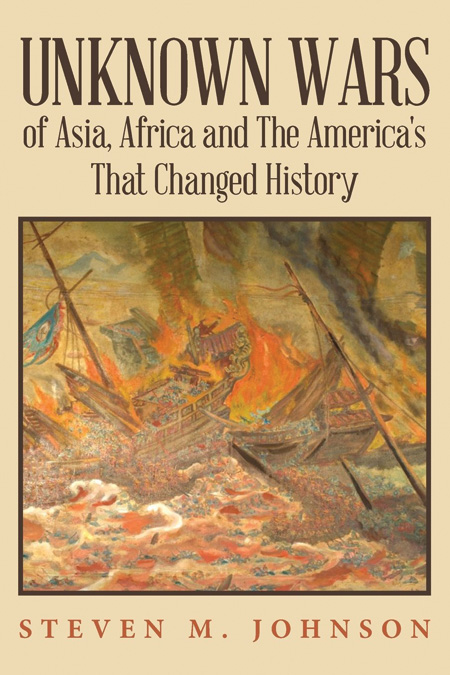 Unknown Wars of Asia, Africa and the America’s That Changed History (Steven M. Johnson, Atlas World Publishing, New York, 2013, 421 pp., maps, photographs, bibliography, index, $24.99, hardcover)
Unknown Wars of Asia, Africa and the America’s That Changed History (Steven M. Johnson, Atlas World Publishing, New York, 2013, 421 pp., maps, photographs, bibliography, index, $24.99, hardcover)
Wars often mark turning points in history, causing or enabling change. Many are well known, while others are virtually unknown but played equally important roles in shaping our world. Often this is a matter of culture; an average Western reader knows nothing of the wars that rocked the Khmer Empire in the 12th century because it is too far outside their society’s frame of reference to make it seem relevant. Those wars affected the development of modern Southeast Asia, a region very much in the public eye in the 21st century. This new work explores a number of those conflicts and how their effects trickle through history to our time. For example, the Taiping Rebellion (1851-1871) claimed 30 million lives over 20 years, beginning when a Chinese schoolteacher read poorly translated Christian tracts and decided he was meant to rid China of Confucianism and government corruption. Raising an army, the movement quickly became a threat to the ruling Qing Dynasty and war broke out. The fanatical Taiping troops won many victories, arming themselves with captured weapons and, in time, growing to 500,000. Eventually internal dissent fragmented the Taiping troops and the original leader of the rebellion died in 1864. Nevertheless, fighting went on until the last vestiges of the Taiping army were destroyed in 1871. Little known in the West, this war featured the rise of regional warlords and their personal armies, which were to have wide effects on China through the mid-20th century when the Communist Revolution began.
This book provides general retellings of the 18 various conflicts it covers, ranging from ancient wars to the Russo-Japanese War of 1904-1905. Some chapters summarize a series of campaigns spread over centuries, such as England’s pirate actions against Spain and the wars conducted around the African slave trade.
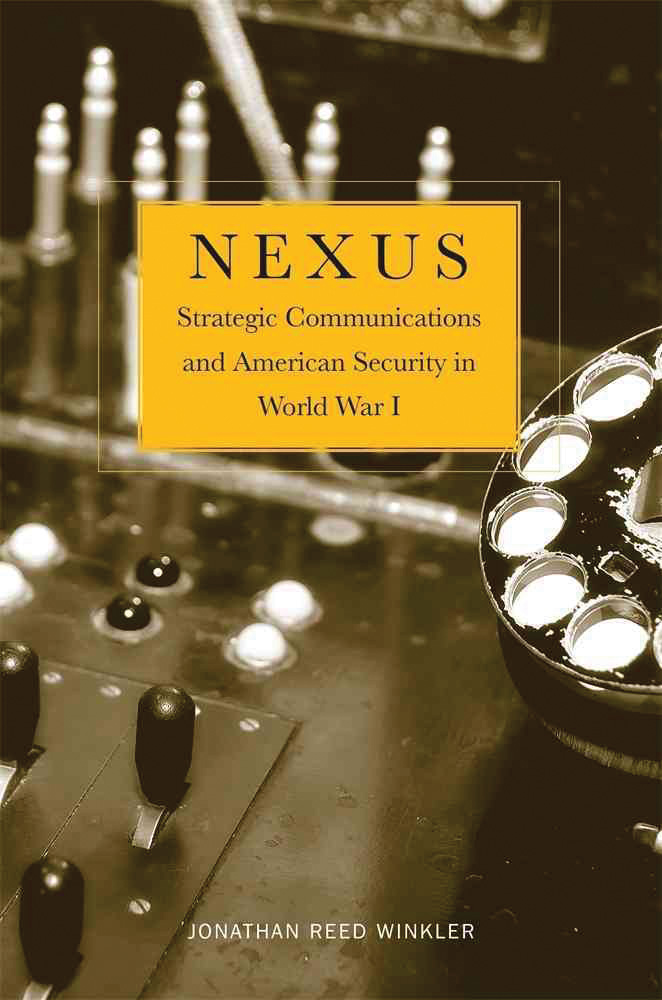 Nexus: Strategic Communications and American Security in World War I (Jonathan Reed Winkler, Harvard University Press, Cambridge, MA, 2013, 347 pp., notes, bibliography, index, $27.95, softcover)
Nexus: Strategic Communications and American Security in World War I (Jonathan Reed Winkler, Harvard University Press, Cambridge, MA, 2013, 347 pp., notes, bibliography, index, $27.95, softcover)
World War I took place during the infancy of modern communications. New inventions such as underwater cables, which enabled the transmission of messages across oceans at heretofore unheard of speeds and the even newer technology of radio made possible a rapidity of information exchange far beyond any previous method. In a way, it was the beginning of what is now called globalization, with deep implications for diplomatic, economic, and military purposes.
During the war years the United States came to appreciate the necessity of such a world-spanning communications network for a nation ready to become a global power. Great Britain, aware of the advantages such systems conferred, quickly destroyed the German complex and began restricting the use of their own. America needed its own capability and set about creating it. How it did so, despite the numerous challenges against it, is a story of both military and political maneuver.
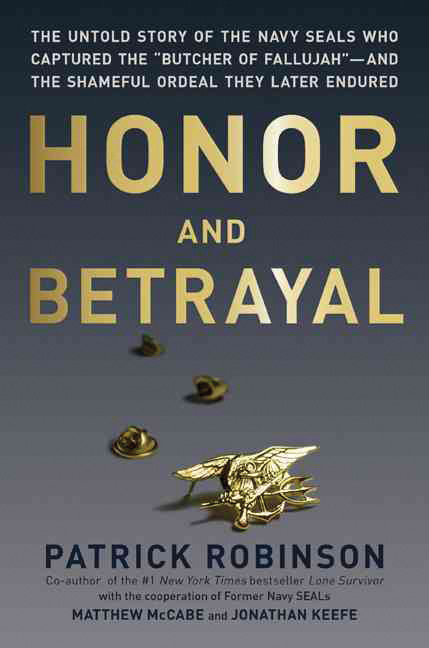 Honor and Betrayal: The Untold Story of the Navy SEALs Who Captured the “Butcher of Fallujah”—and the Shameful Ordeal They Later Endured (Patrick Robinson, Da Capo Press, Boston, MA, 2013, 400 pp., $26.99, softcover)
Honor and Betrayal: The Untold Story of the Navy SEALs Who Captured the “Butcher of Fallujah”—and the Shameful Ordeal They Later Endured (Patrick Robinson, Da Capo Press, Boston, MA, 2013, 400 pp., $26.99, softcover)
In 2004, an Al Qaeda terrorist named Ahmad Hashim Abd al-Isawi orchestrated the murder of four American civilian contractors in Fallujah, Iraq. Their bodies were hung from a bridge nearby; images of that event are now famous as part of the Iraq War. The perpetrator, nicknamed the Butcher of Fallujah, became the target of a manhunt just as the city of his birth became a battleground between U.S. forces and Iraqi militants.
Five years later, in September 2009, a Navy SEAL team captured al-Isawi during a raid. Shortly after his capture, he accused the SEALs of beating him while in his holding cell. Three SEALs—Matthew McCabe, Jonathan Keefe, and “Sam Gonzales” (a pseudonym since he is still a SEAL operator)—were taken to Shark Base, a special operations base at nearby Camp Ramadi and accused of abusing a prisoner. The men denied doing so but were charged and court-martialed. The story of their ordeal and eventual exoneration are told here, along with the lasting results of their experience.
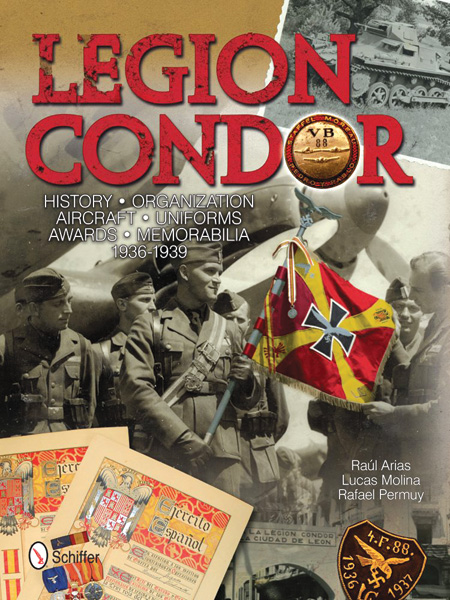 Legion Condor: History—Organization—Aircraft—Uniforms—Awards—Memorabilia, 1936-1939 (Raul Arias, Lucas Molina and Rafael Permuy, Schiffer Publishing, Atglen PA, 2013, 292 pp., illustrations, photographs, bibliography, $79.99, hardcover)
Legion Condor: History—Organization—Aircraft—Uniforms—Awards—Memorabilia, 1936-1939 (Raul Arias, Lucas Molina and Rafael Permuy, Schiffer Publishing, Atglen PA, 2013, 292 pp., illustrations, photographs, bibliography, $79.99, hardcover)
The Nazi Condor Legion was a volunteer force composed of German military personnel who served in the Spanish Civil War on the side of the Nationalists. Often thought of as an air force effort, the Condor Legion actually contained air, ground, and naval elements over the time of its existence. Infamous for its bombing of the city of Guernica in April 1937, the unit was considered a test case for many of the innovations and tactics of World War II, as well as a schoolhouse for future leaders of the German military, in particular the Luftwaffe.
Schiffer excels at specialized books on the Third Reich and this work is no exception. The illustrations are lavish with more than 1,000 photographs of the Condor Legion at war and during training and relaxation periods as well. Numerous drawings and a colorful layout make this work pleasing to the eye. While visually stimulating, the text is also detailed and extensive. A reader totally ignorant of the Condor Legion would be a knowledgeable near-expert after reaching the last page of this all-encompassing volume.
Short Bursts
 On War: The Best Military Histories (various writers, Pritzker Military Museum and Library, 2013, $27.00, hardcover) A collection of essays excerpted from the works of prize-winning authors in military history. Subjects range from the American Civil War to Vietnam.
On War: The Best Military Histories (various writers, Pritzker Military Museum and Library, 2013, $27.00, hardcover) A collection of essays excerpted from the works of prize-winning authors in military history. Subjects range from the American Civil War to Vietnam.
Reconstructing a Shattered Egyptian Army: War Minister Gen. Mohamad Fawzi’s Memoirs 1967-71 (Youssef Aboul-Enein, Naval Institute Press, 2014, $64.95, hardcover) This Egyptian general undertook the effort to rebuild his nation’s army after its loss in the Six Day War. The result was Egypt’s ability to go to war again in 1973.
Assault from the Sky: US Marine Corps Helicopter Operations in Vietnam (Dick Camp, Casemate Press, 2013, $32.95, hardcover) Personal accounts and official reports are blended to tell the story of how the U.S. Marine Corps used helicopters to take the fight to the enemy. Helicopters often provided a crucial mobility that enabled battlefield victory.
George Crook: From the Redwoods to Appomattox (Paul Magid, University of Oklahoma Press, 2011, $24.95, softcover) A new biography of the famous frontier general. This version focuses on his early career in a newly released paperback edition.
U-9: A Damned Un-English Weapon (Jim Thesing, Merriam Press, 2013, $16.95, softcover) The story of the German submarine that sank three British cruisers in September 1914. This successful attack brought attention to a new threat to the supremacy of the Royal Navy.
Harlem’s Rattlers and the Great War: The Undaunted 369th Regiment and the African American Quest for Equality (Jeffrey T. Sammons and John H. Morrow, Jr., University of Kansas Press, 2014, 34.95, softcover) This book ignores the myths surrounding this famous New York unit to explore its real history. Included is its role in the contemporary fight for racial equality.
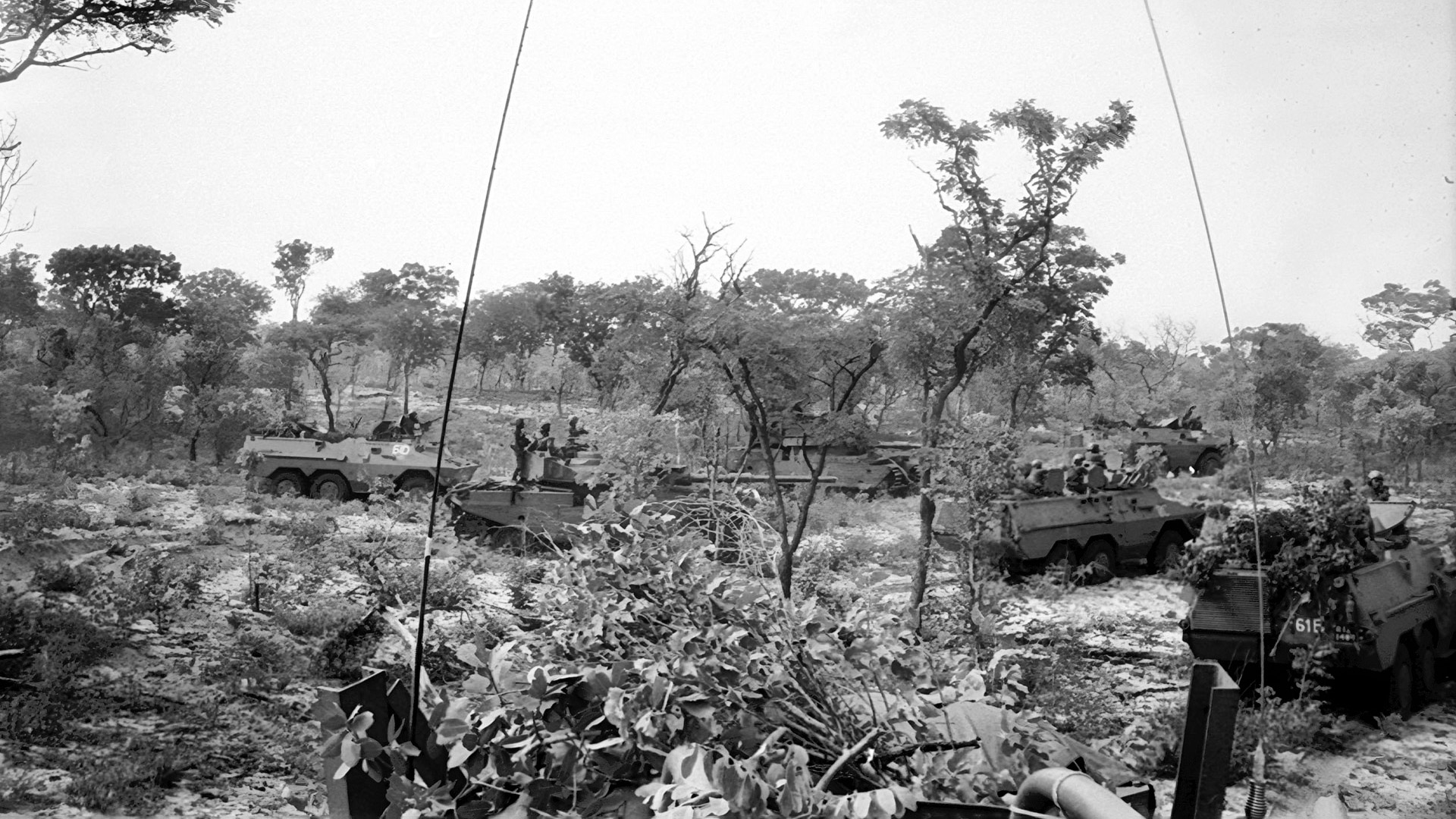
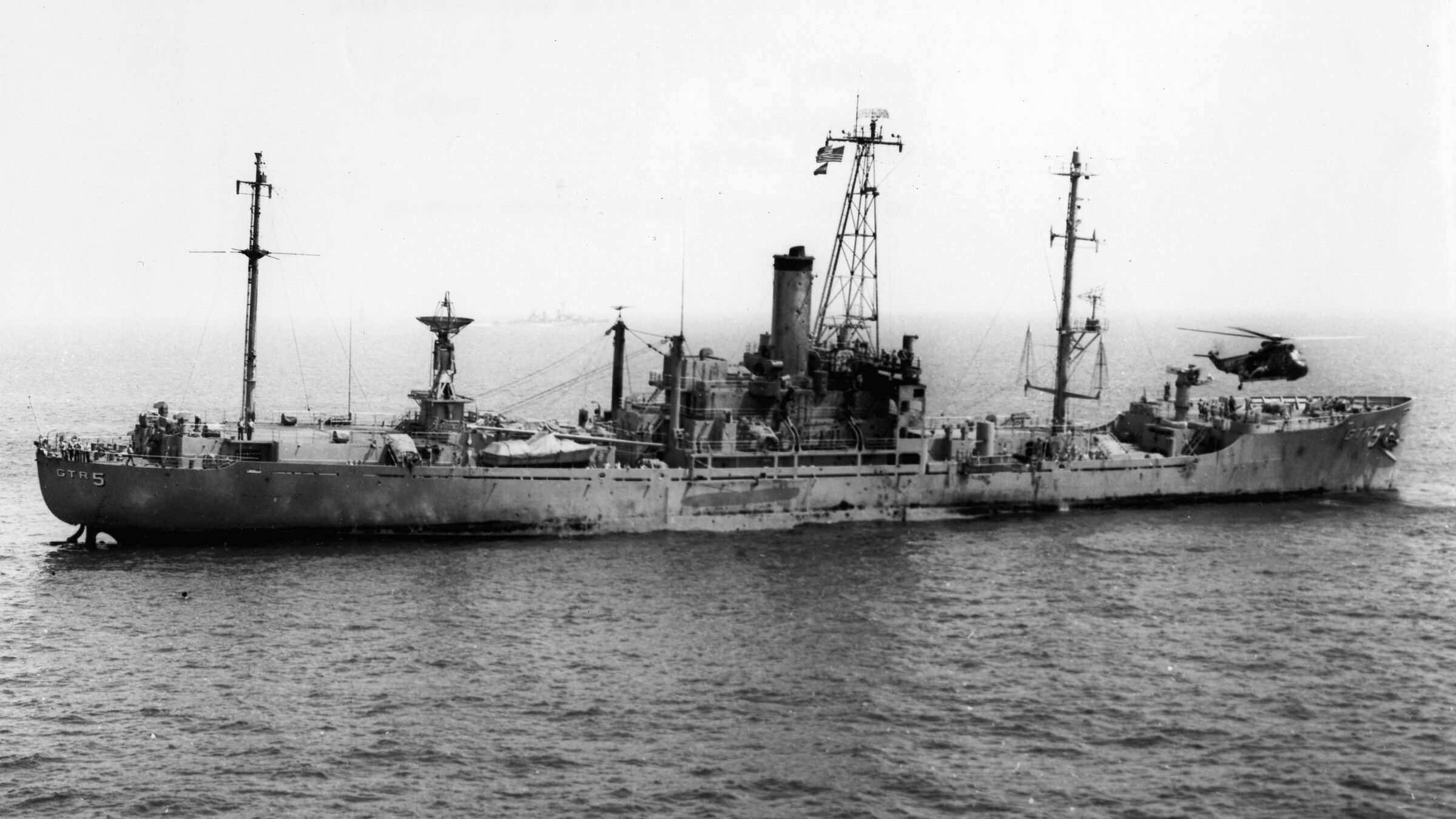
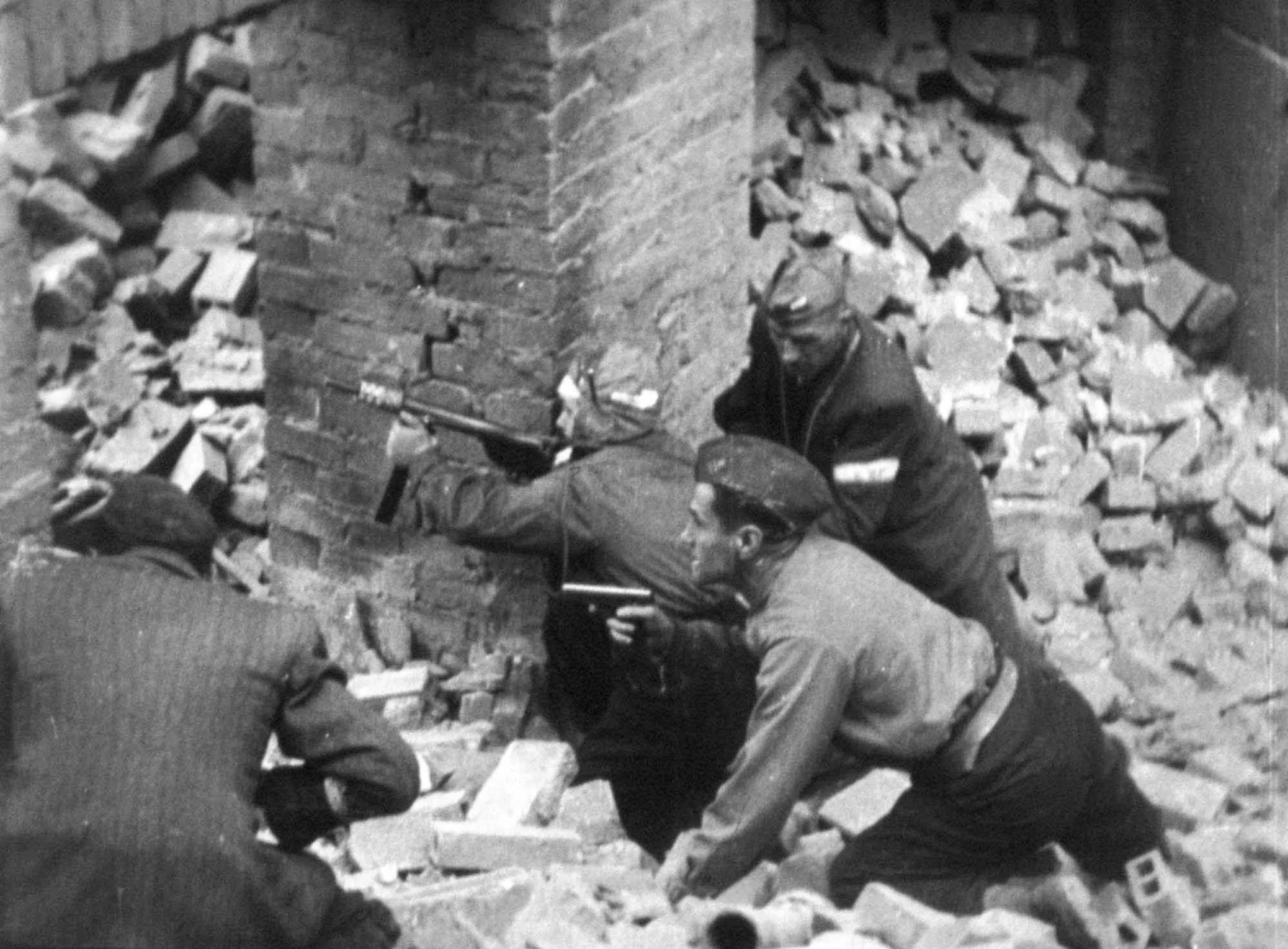

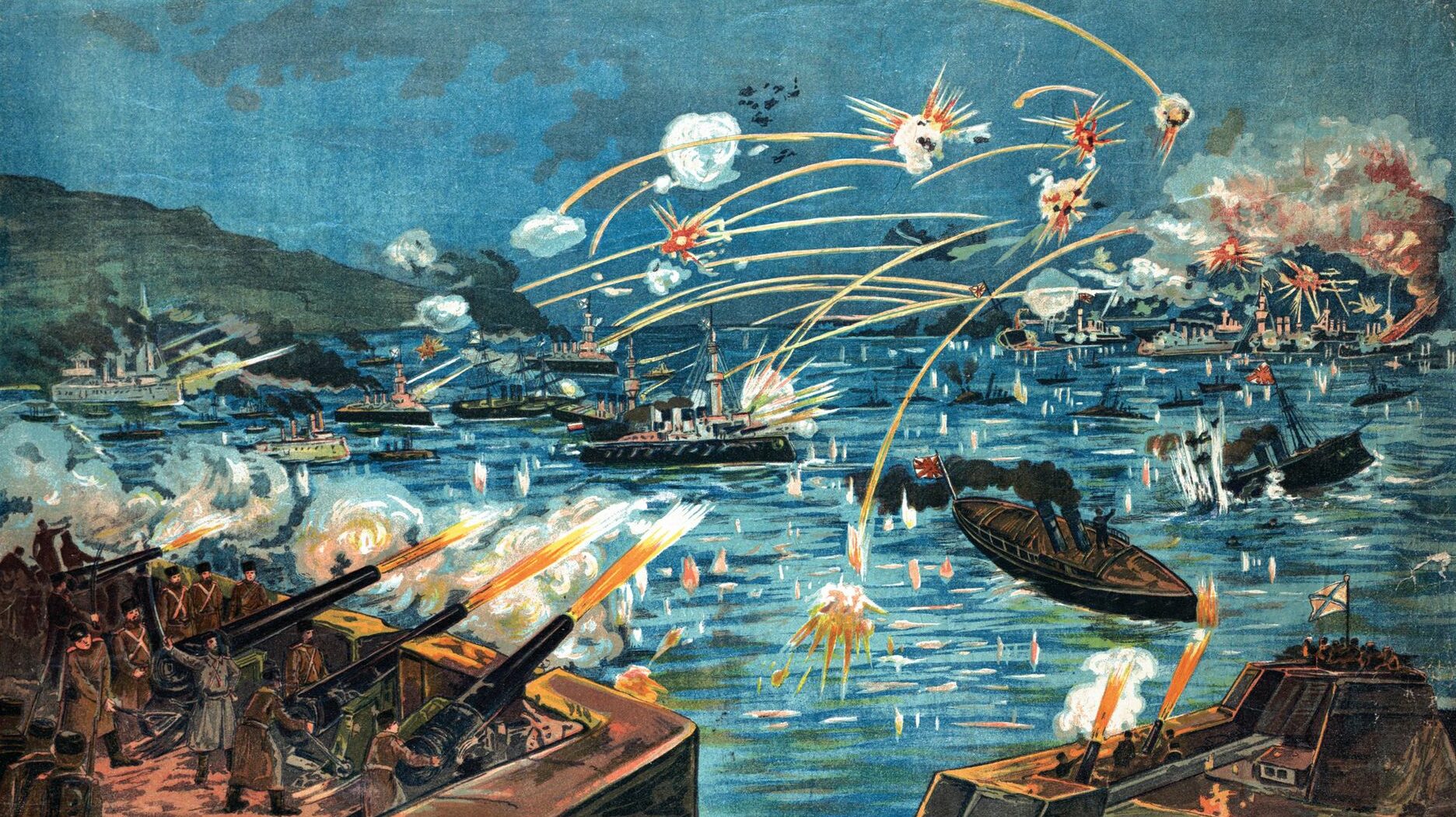
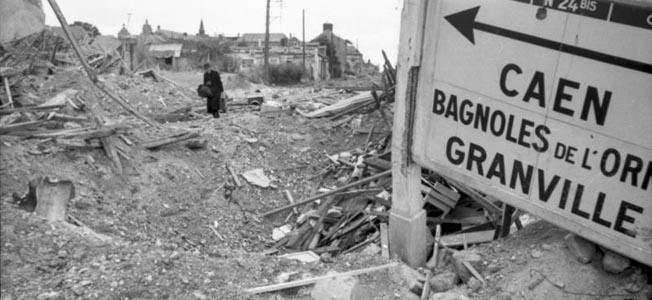
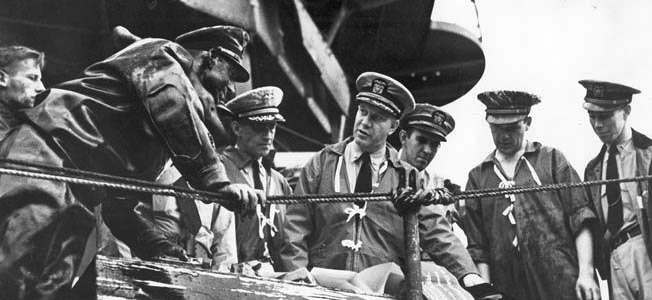
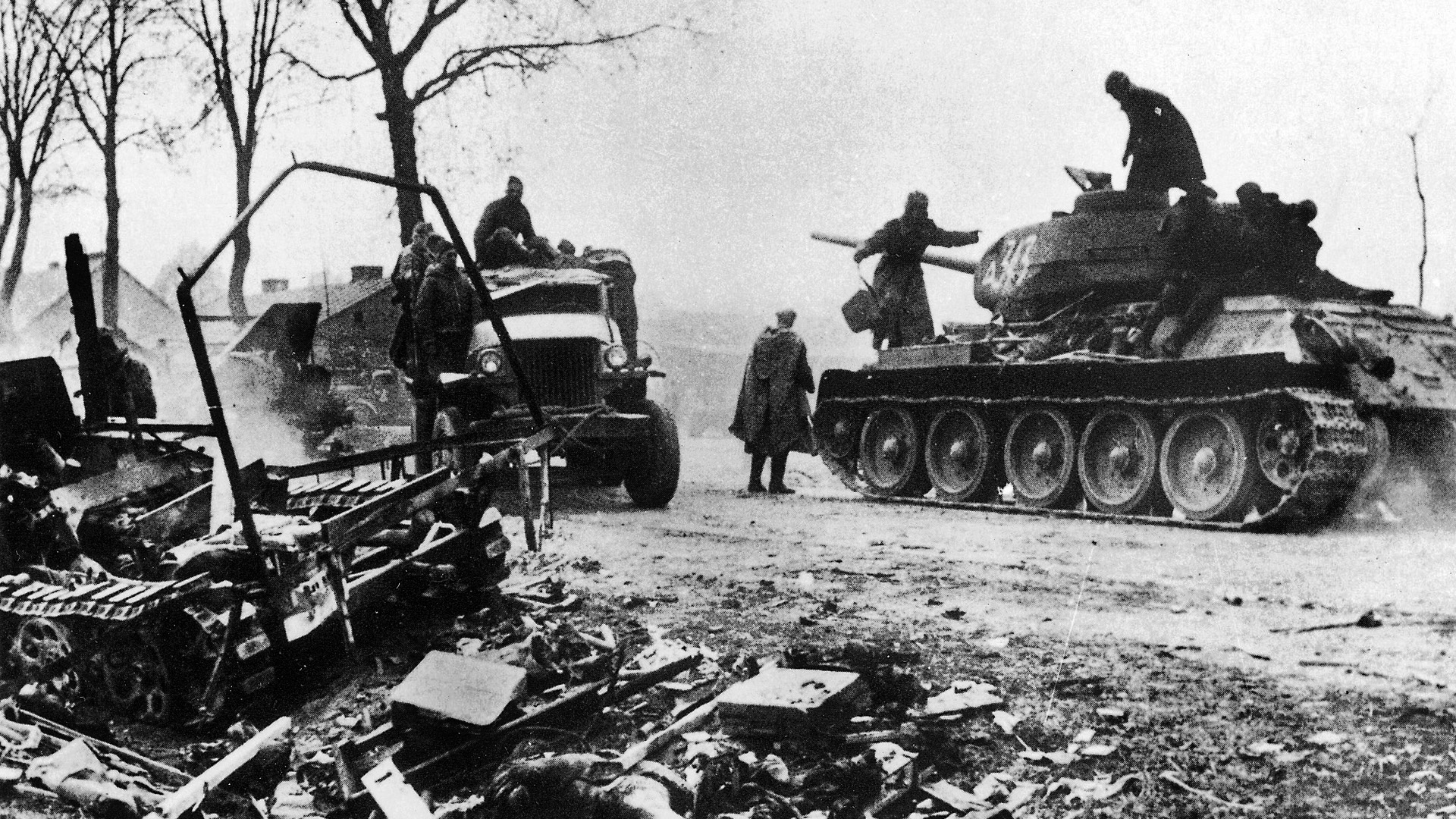
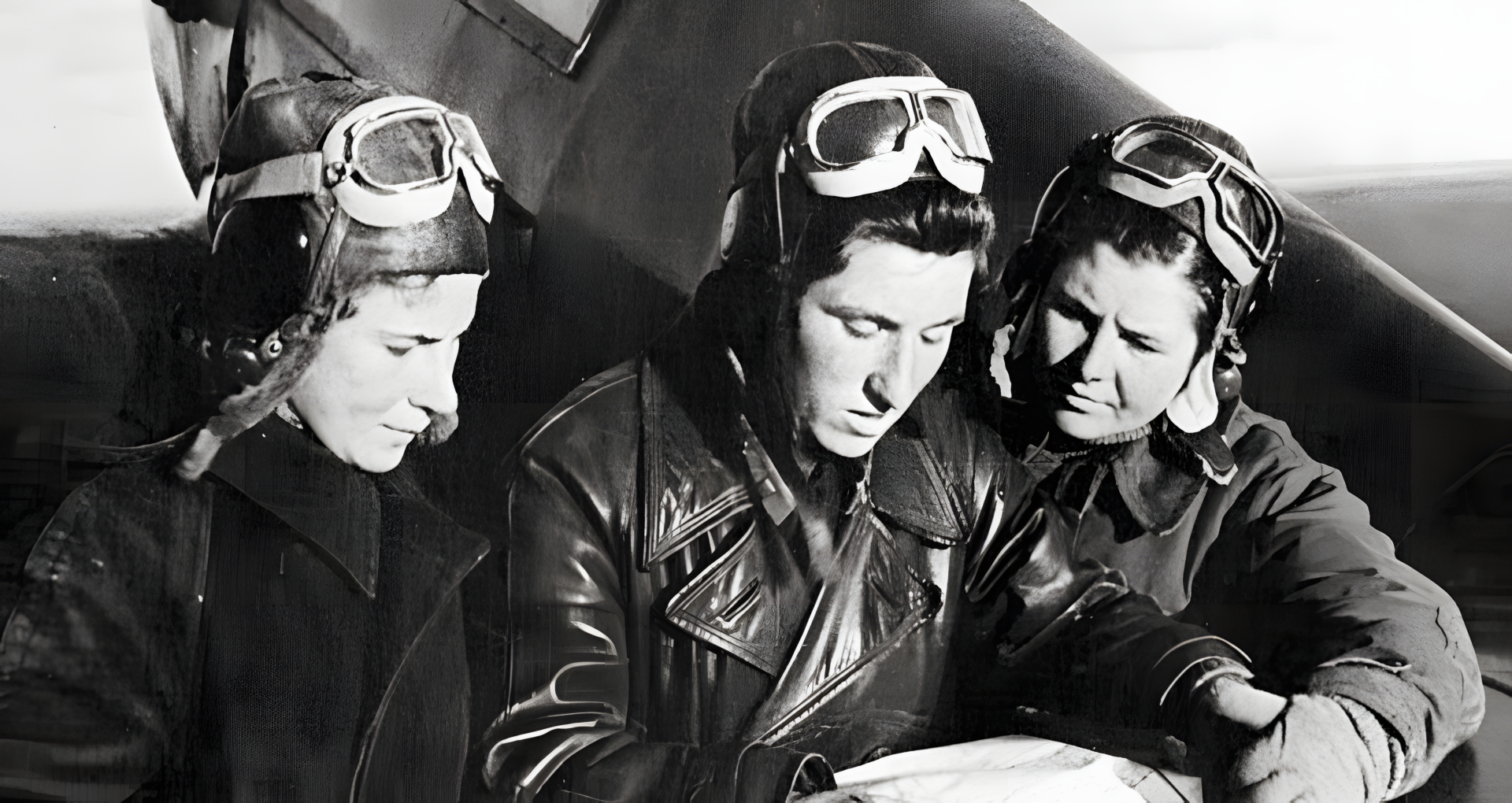
Join The Conversation
Comments
View All Comments